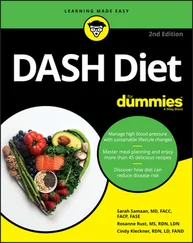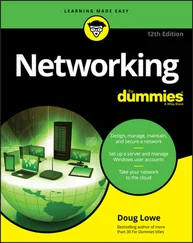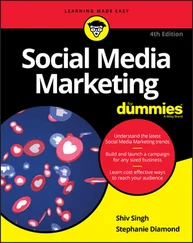Point 6: Does the offer have a high perceived value?
Just because your gated offer is free doesn’t mean that it should look free. Use good design through the use of professional graphics and imagery to create a gated offer of high perceived value in the mind of your lead.
Point 7: Does the offer have a high actual value?
The right information at the right time can be priceless. The gated offer that delivers something priceless will enjoy very high conversion rates, but if you’re promising value, you have to deliver on it. A gated offer has high actual value when it lives up to its promise and delivers the goods.
Point 8: Does the offer allow for rapid consumption?
You don’t want your gated offer to be a roadblock in the customer’s journey toward becoming a customer. Before customers buy from you, they want to receive value from your gated offer. You want the gated offer to help move the lead to the next step, so ideally the gated offer should deliver value immediately. In other words, avoid long e-books or courses that take days or months to deliver their value.
 Why do we keep insisting that your gated offer be quickly and easily consumable? Because after your gated offer has been consumed, you want to make the next offer whenever possible. There is (usually) no better time to make an offer than directly after someone has taken a prior offer. However, few will buy from you if they have not received the value from the last offer you made — your gated offer. So be sure that your gated offer quickly delivers value, allowing you to then make an offer to purchase something, which we discuss in the next section.
Why do we keep insisting that your gated offer be quickly and easily consumable? Because after your gated offer has been consumed, you want to make the next offer whenever possible. There is (usually) no better time to make an offer than directly after someone has taken a prior offer. However, few will buy from you if they have not received the value from the last offer you made — your gated offer. So be sure that your gated offer quickly delivers value, allowing you to then make an offer to purchase something, which we discuss in the next section.
Designing Deep-Discount Offers
Acquiring leads is the goal of the gated offer discussed in the previous section, but how do you acquire buyers? Remember that the key to success online is the sequence of the offers you make to new leads and customers. The best way to acquire buyers is by making an offer at such a deep discount that it is difficult to refuse. A deep-discount offer is an irresistible, low-ticket offer made to convert leads and cold prospects into buyers.
 The goal of a deep-discount offer is not profit. In fact, selling deep-discount offers may come at a net loss to your company. Offering deep discounts may therefore seem counterintuitive, but the goal of this type of offer is to acquire buyers. Deep-discount offers change relationships; they turn a prospect into a customer, and that’s a big deal. After a prospect makes a successful purchase with your company, she is far more likely to buy from you again. Deep-discount offers bring you one step closer to achieving your goal of converting a prospect to a repeat buyer and possibly even a raving fan.
The goal of a deep-discount offer is not profit. In fact, selling deep-discount offers may come at a net loss to your company. Offering deep discounts may therefore seem counterintuitive, but the goal of this type of offer is to acquire buyers. Deep-discount offers change relationships; they turn a prospect into a customer, and that’s a big deal. After a prospect makes a successful purchase with your company, she is far more likely to buy from you again. Deep-discount offers bring you one step closer to achieving your goal of converting a prospect to a repeat buyer and possibly even a raving fan.
In the following sections, we discuss the six different types of deep-discount offers you can employ.
As the name suggests, physical premiums are physical products. Offer something that your market desires and discount it deeply. Beauty counters use this tactic by letting customers test out products for free before they purchase them, or by letting them take home trial-sized products to try out. Even online retailers have adopted this tactic, as shown in Figure 3-6.

Source: https://www.huevine.com/products/try-before-you-buy
FIGURE 3-6:HueVine uses the free + shipping method for their beauty products.
A physical book can make an excellent deep-discount offer. Books have an extremely high perceived and actual value. If you need to establish authority and trust with your market before making more complex or higher-ticket offers, the book is a great deep-discount offer to employ. Consider offering the book at a steep discount, or free plus shipping and handling. Although we don’t recommend a physical or digital book for generating leads, it’s a highly effective way to convert prospects and leads into customers. Remember, the objective of a deep-discount offer is to change the relationship with a lead or prospect and turn the person into a customer.
Webinars are one of the most versatile offers available to digital marketers. You can conduct free webinars to generate leads, plus you can offer a webinar as a product. Remember that when you’re charging for anything and particularly a webinar, you should deliver value beyond what you’ve charged to attend.
 When employing a webinar to serve as a deep-discount offer, you may not want to use the term webinar in your offer. People generally associate that term with something free. Consider calling your deep-discount-offer webinar a teleclass, online training, or boot camp instead. It can be prerecorded or held live.
When employing a webinar to serve as a deep-discount offer, you may not want to use the term webinar in your offer. People generally associate that term with something free. Consider calling your deep-discount-offer webinar a teleclass, online training, or boot camp instead. It can be prerecorded or held live.
Software and application plug-ins are effective deep-discount offers because software saves people time and energy, so these are highly sought-after commodities. When you use software as a deep-discount offer, the deep discount price is likely to cause a “buying frenzy,” resulting in a highly successful acquisition campaign.
If your business has a high-dollar product or service, you can take a small piece of that product, also known as a splinter, and sell it à la carte . The key is to offer a piece of your service that can stand alone at an incredibly low price.
An example of a company that uses this approach is Fiverr, an online marketplace that offers tasks and services starting at $5. Figure 3-7 shows one of these Fiverr services, which include creating business logos. This is an excellent example of offering part of a highly sought-after service at a deep discount that will help turn a lead into a customer and can ultimately lead to more sales. After a person has bought from you, he’s likely to buy from you again.
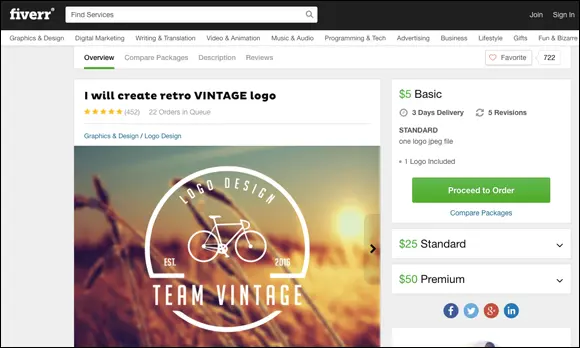
Source: https://www.fiverr.com/gfx_expert2/create-retro-vintage-logo
FIGURE 3-7:Through Fiverr, larger services can be splintered into smaller, single projects.
Because you’re breaking out a part or splinter of your service, you don’t have to create a new service. Instead, you’re offering a portion of an existing product or service.
Brainstorming “little victories” to offer your leads
Because deep-discount offers are low priced, low risk, and highly desirable, they help your leads overcome doubt about your business or product. Less monetary risk is involved for the leads, so they’re willing to take a chance and become customers. However, it can be harder for a marketer or a business owner to overcome the self-doubt that leads may have about themselves or their ability to reach the “After” state that your product or service promises to take them to. That’s why the best deep-discount offers lead the customer to a “little victory.”
Читать дальше
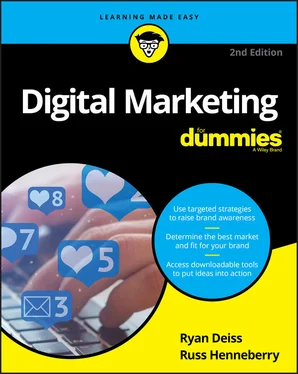
 Why do we keep insisting that your gated offer be quickly and easily consumable? Because after your gated offer has been consumed, you want to make the next offer whenever possible. There is (usually) no better time to make an offer than directly after someone has taken a prior offer. However, few will buy from you if they have not received the value from the last offer you made — your gated offer. So be sure that your gated offer quickly delivers value, allowing you to then make an offer to purchase something, which we discuss in the next section.
Why do we keep insisting that your gated offer be quickly and easily consumable? Because after your gated offer has been consumed, you want to make the next offer whenever possible. There is (usually) no better time to make an offer than directly after someone has taken a prior offer. However, few will buy from you if they have not received the value from the last offer you made — your gated offer. So be sure that your gated offer quickly delivers value, allowing you to then make an offer to purchase something, which we discuss in the next section. The goal of a deep-discount offer is not profit. In fact, selling deep-discount offers may come at a net loss to your company. Offering deep discounts may therefore seem counterintuitive, but the goal of this type of offer is to acquire buyers. Deep-discount offers change relationships; they turn a prospect into a customer, and that’s a big deal. After a prospect makes a successful purchase with your company, she is far more likely to buy from you again. Deep-discount offers bring you one step closer to achieving your goal of converting a prospect to a repeat buyer and possibly even a raving fan.
The goal of a deep-discount offer is not profit. In fact, selling deep-discount offers may come at a net loss to your company. Offering deep discounts may therefore seem counterintuitive, but the goal of this type of offer is to acquire buyers. Deep-discount offers change relationships; they turn a prospect into a customer, and that’s a big deal. After a prospect makes a successful purchase with your company, she is far more likely to buy from you again. Deep-discount offers bring you one step closer to achieving your goal of converting a prospect to a repeat buyer and possibly even a raving fan.







